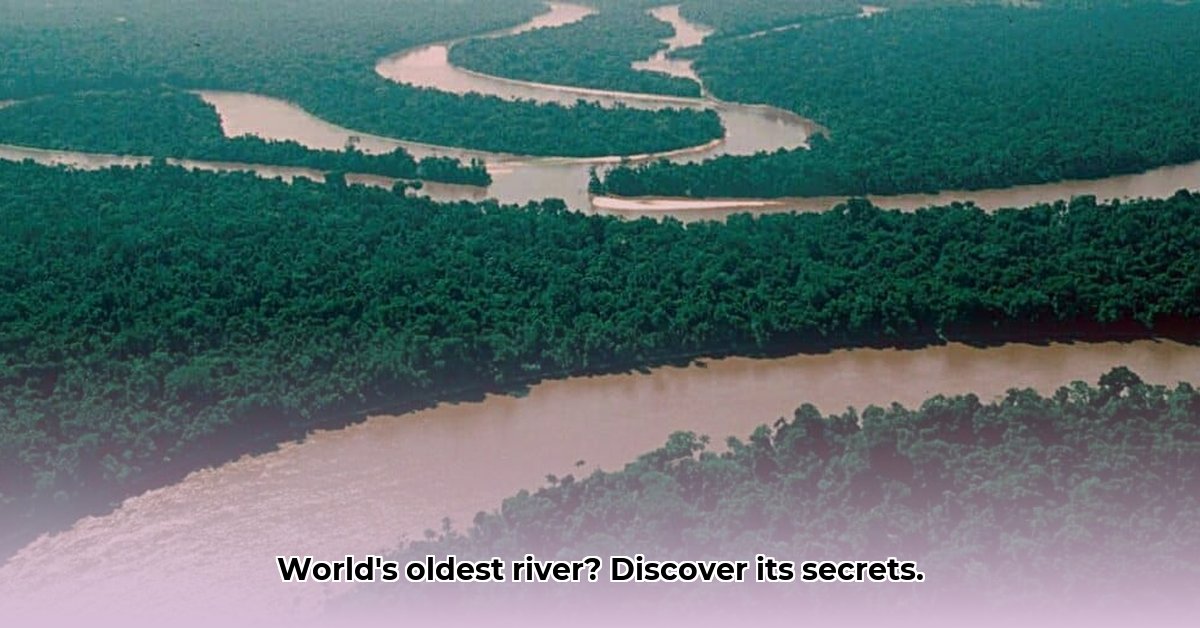
Oudste Rivier Ter Wereld: Unraveling Earth's Oldest Waterways
Finding the world's oldest river isn't a simple task; it's more like solving a complex geological puzzle. It's not merely about finding the longest river, nee. We need to pinpoint which river has flowed continuously in roughly the same location for the longest period, despite continental shifts and other geographical changes. This requires delving into Earth's deep history, examining geological clues meticulously, and understanding how continents have moved over millions of years. Think of it as reconstructing a massive Lego castle after a powerful earthquake—a truly monumental challenge for scientists!
Currently, the Finke River in Australia holds the title, boasting an impressive age of approximately 350 million years. But, ag shame, are we absolutely certain? Dating these ancient waterways presents significant difficulties. The scientific methods used have limitations; it’s like trying to date an ancient painting by only examining a tiny, chipped-off fragment of its frame—we're missing the bigger picture. Did you know that the methods used to date these rivers have an error margin? This makes it crucial to consider all available evidence.
Die Groot Debat: Which River is the Oldest?
While the Finke River puts forward a compelling argument, other rivers also possess captivating stories. The Nile, the Euphrates, and the Yellow River—though possibly "younger" geologically—possess immense cultural significance. These rivers nurtured early civilizations, profoundly shaping their development and leaving an enduring legacy on human history. So, what truly defines the "oldest" river? Is it the age of the riverbed itself, or the duration of its continuous flow along its current path?
The answer, my ou, depends on your perspective. Geological age offers a scientific narrative, while cultural significance illuminates humanity's deep connection with these powerful waterways. A multi-pronged approach is essential—combining insights from geology, archaeology, and history—a real brainstorm sessie is needed to solve this conundrum.
A New Perspective on River Age
Accurately determining a river's age necessitates a multifaceted approach, utilising diverse lines of evidence. Here's the game plan:
Geochronology: Employing sophisticated techniques like radiometric dating (a method that measures the decay of radioactive isotopes in rocks and minerals to determine their age) to analyze rocks and sediments from the riverbed. This helps determine the age of the geological formations.
Tectonic Analysis: Studying the movement of Earth's tectonic plates over time along the river's path. A river needs a relatively stable path to maintain a continuous flow for such an extensive duration. Imagine trying to maintain a water slide's integrity during an earthquake!
Hydrological Modelling: Constructing computer models to simulate the river's flow over time, considering climate and landscape changes. These models can help scientists understand how a river’s course might have changed over time.
Archaeological and Historical Evidence: For certain rivers, we can examine evidence from human settlements to understand how people interacted with the river, providing invaluable information about its continuous flow. This adds crucial context and clarifies the river's history.
The Significance of Ancient Rivers
Ancient rivers are more than just natural features; they are lifelines. They shaped human settlements, supported civilizations, and continue to play a critical role in maintaining environmental balance. Their preservation is paramount; they are, after all, an irreplaceable part of our heritage. How many people, for instance, rely on these rivers today?
A Call to Action: Preserving Our Ancient Waterways
| Group | Short-Term Actions (0-1 year) | Long-Term Actions (3-5 years) |
|---|---|---|
| Geologists & Hydrologists | Improve dating techniques; explore alternative methodologies. | Develop standardized criteria for quantifying river age; integrate multiple datasets for a more holistic approach. |
| Archaeologists & Anthropologists | Investigate the relationship between ancient civilizations and their rivers. | Document the long-term impact of rivers on human societies and culture. |
| Environmental Protection Organizations | Advocate for the protection of ancient river ecosystems. | Develop sustainable management plans, focusing on threats like climate change and pollution. |
| Governments & International Organizations | Fund research on ancient rivers; implement protective policies. | Foster cooperation on transboundary river management; improve international water law. |
The quest to identify the world's oldest river is a continuous journey, not a race. It's an ongoing exploration of Earth's past, deeply intertwined with the human experience. By blending scientific rigor with cultural understanding, we can better appreciate these incredible rivers and work towards ensuring their protection for future generations. It's a story that deserves to be told and retold.
Key Takeaways:
- Accurately determining a river's age is a complex scientific undertaking.
- Multiple methods are employed, combining approaches to create a holistic understanding.
- Dating the surrounding rocks provides a minimum age estimate.
- Several factors, like tectonic plate movement and climate change, influence a river's trajectory and age.
- Understanding river ages is essential for managing water resources, safeguarding environments, and assessing risks.